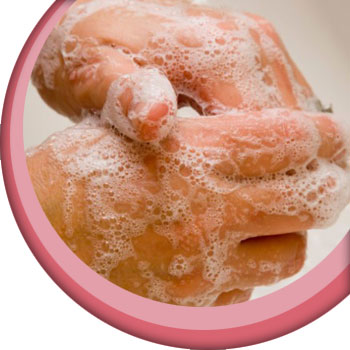
Hygiene Practices
Effective hygiene practices41,42 should reduce exposure of patients and staff
to bacteria whilst in the practice environment. The following list highlights
important areas to consider.
• Hand hygiene – hands should be washed (where necessary) with an appropriate
antiseptic and disinfected between patients. Correct hand washing procedure should
be followed. Gloves should be worn for clean or aseptic tasks or where there is direct
contact with potentially infectious material. Hands should also be washed before
and after eating and at the start and end of the working day.
Click here to see our hand washing guide.
• Correct disposal of waste in appropriate containers without having to move between rooms.
• Uniforms should be simple and should be washed at above 30ºC with a detergent.
They should not be worn outside, and should be changed regularly or as soon as they are
soiled. Plastic aprons, gloves and masks should be worn when handling patients with suspected
or confirmed contagious disease or potentially contaminated fluids or secretions.
• Cleaning and disinfection - all surfaces and equipment should be cleaned and disinfected between patients, including kennels and cages. Equipment that cannot be easily cleaned should be avoided in clinical areas. Soiled bedding should be washed as soon as possible. Protocols for cleaning and disinfection should be displayed with an indication of necessary frequency, and tasks should be recorded when completed. Approved products should be used. Click here to find out more about disinfectants.
• Appropriate isolation and barrier nursing of patients suspected or confirmed as having a communicable infection.
• High standards of aseptic technique for surgical procedures.
• Education of staff to ensure that all personnel understand the importance of hygiene procedures. It is also useful to develop written practice protocols.
For effective hygiene, when hands or equipment are soiled an appropriate detergent and water must be used before a disinfectant, as disinfectants are often ineffective in the presence of organic matter.
Disclaimer: Indications and doses may vary between products. The antimicrobials listed may constitute an off licence use of the product and as such should only be used according to the ‘Cascade’, further details of which are available on the RCVS, VMD and NOAH websites. Veterinary surgeons are advised to carefully check the Summary of Product Characteristics (SPC) before prescribing a product and obtain informed owner consent where required.

